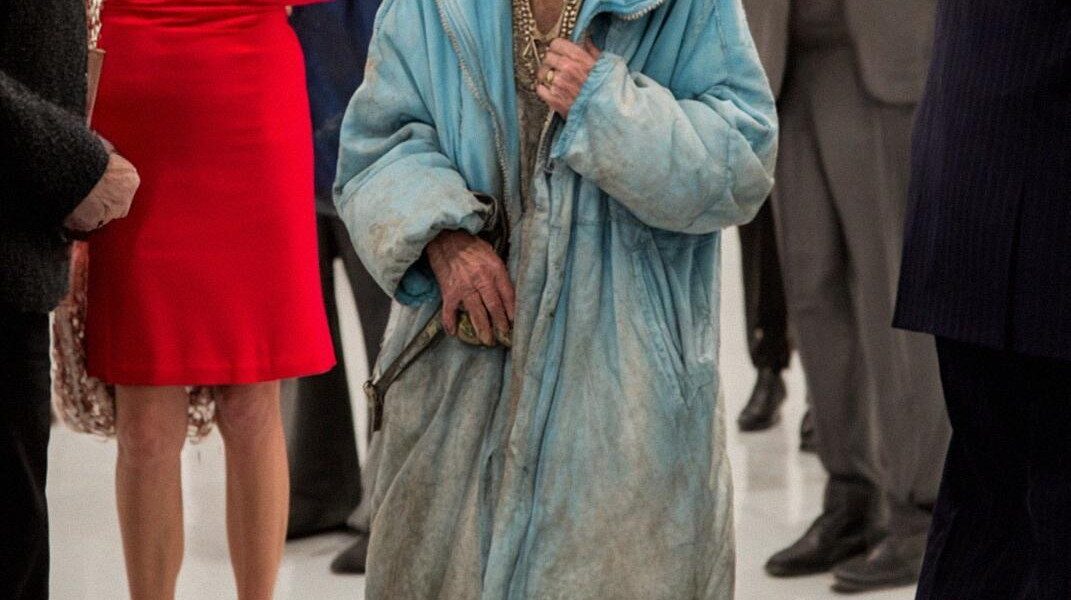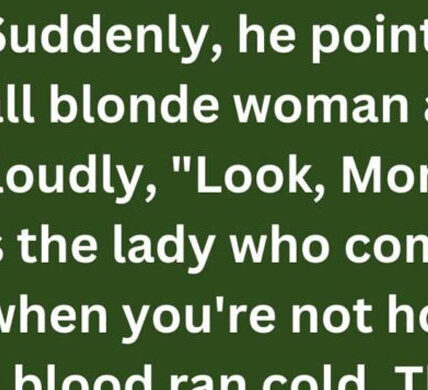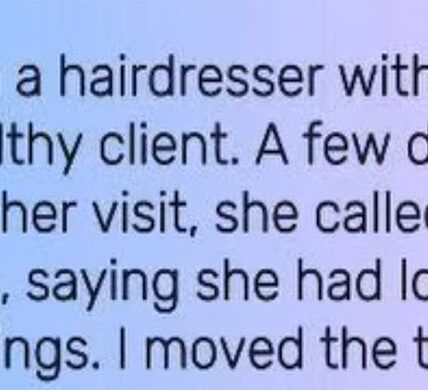I Let a Homeless Lady That Everyone Despised Into My Art Gallery – She Pointed at One Painting and Said, Thats Mine
My name’s Tyler. I’m 36, and I run a small art gallery in downtown Seattle. It’s not one of those flashy, champagne-and-small-talk places. Mine’s quieter — warm jazz, creaking oak floors, and gold-framed paintings that catch the light just right. It’s the kind of place where people whisper like they’re in a church.
I opened the gallery after losing my mom, a ceramicist who never sold her work but filled our apartment with color. When she died during my last year of art school, I couldn’t paint anymore. Running a gallery became my way to stay close to her without drowning in grief.
That Thursday started like any other — gray skies, wet sidewalks, and the smell of rain. I was fixing a tilted frame by the door when I saw her outside.
She looked about sixty, maybe older. Soaked to the bone, coat clinging to her shoulders, hair matted from the downpour. She stood under the awning, trying to disappear into the bricks.
Then the regulars arrived — three women in expensive coats and sharper tongues. The air turned cold the moment they spotted her.
“Oh my God, the smell,” one muttered.
“She’s dripping on my shoes,” another hissed.
“Sir, are you really going to let her in here?”
The woman outside flinched but didn’t move. You could tell she’d heard it all before. My assistant, Kelly — kind, quiet, early 20s — whispered, “Should I ask her to leave?”
“No,” I said. “Let her in.”
The bell over the door chimed softly as she stepped inside. The whispers followed her like shadows. Her coat was threadbare, her sweatshirt faded, her boots leaving small puddles on the floor.
“She doesn’t belong here.”
“She’s ruining the atmosphere.”
“She probably can’t spell ‘gallery.’”
I stayed silent. She moved through the space slowly, studying every painting as if she was remembering something she’d once known. Then she stopped in front of one piece — a sunrise over a city skyline.
Vibrant oranges and purples blended into shadowed buildings. It was one of my favorites, full of quiet grief and beauty.
She stared at it for a long time. Then, in a trembling voice, said, “That’s mine. I painted it.”
The room froze. Then came the laughter — sharp, cruel, dismissive.
“Sure, honey. Maybe you painted the Mona Lisa, too.”
“She’s delusional,” someone whispered.
But the woman didn’t flinch. She raised her hand and pointed to the lower right corner of the painting.
There it was: M. L., barely visible beneath the glaze.
I knew those initials — I’d tried to track them once. I’d bought the painting two years earlier at an estate sale. The seller said it came from a storage unit, no record of the artist. I loved the piece, but it had always felt like an orphan — powerful, but unclaimed.
Now, standing in front of me, was the person who claimed it.
“What’s your name?” I asked.
“Marla,” she said. “Marla Lavigne.”
I asked her to sit. Kelly brought a chair without a word. The gallery was uncomfortably quiet — the same people who’d sneered were now pretending to admire nearby pieces, ears still turned toward us.
Marla spoke softly, like someone afraid her voice would be taken from her again.
“I painted that years ago. Before… everything.” She paused. “There was a fire. My apartment, my studio — gone. My husband didn’t make it out. After that, I lost everything. My home, my work, my name. Someone took my paintings and sold them. I didn’t know how to fight it. I became invisible.”
Her hands shook. Paint still stained her fingers — proof of who she was, even now.
“You’re not invisible,” I said quietly. “Not anymore.”
That night, I couldn’t sleep. I dug through receipts, auction records, and old gallery catalogs. Kelly joined in, combing archives like a detective. After days of searching, we found an old brochure from 1990 — a photo of Marla standing in front of the same painting, smiling, alive. The plaque beneath read “Dawn Over Ashes, by M. Lavigne.”
When I showed her the picture, she gasped and pressed it to her chest. “I thought it was all gone.”
“It’s not,” I said. “We’re going to fix this.”
We relabeled every piece with her name, contacted auction houses, and sent documentation to correct records. Kelly even found old press clippings confirming Marla’s authorship.
One name kept coming up — Charles Ryland. A gallery owner who’d “discovered” Marla’s work decades ago. He’d been selling her paintings under his own name, claiming a partnership that never existed.
Marla didn’t want confrontation. “I don’t want revenge,” she said. “I just want my name back.”
But Charles showed up anyway — angry, red-faced, shouting.
“Where is she? You think you can ruin me with these lies?”
I stood my ground. “It’s not lies. We have proof — photos, records, witnesses. You stole her work.”
He sneered. “You think this will hold up? I own those pieces.”
“No,” I said. “You stole them from a woman who lost everything.”
He stormed out, threatening lawsuits. Two weeks later, after we handed over the files to a local journalist and the district attorney, he was arrested for fraud and forgery.
Marla didn’t celebrate. She just stood in the gallery, arms crossed, eyes closed, breathing quietly. “I don’t want him destroyed,” she said. “I just want to exist again.”
And she did.
We gave her the back room as a studio — big windows, morning light, the smell of coffee from next door. She began painting again, teaching neighborhood kids in the afternoons. “Art isn’t just about beauty,” she told them. “It’s about feeling. It’s turning pain into something that makes people stop and look.”
She was different now — softer around the edges but strong, steady. One morning I saw her guiding a shy boy through a charcoal sketch, her patience infinite. “He sees the world in his own way,” she whispered. “Just like I used to.”
Months later, we hosted her first exhibit in decades. She called it Dawn Over Ashes. Every painting — old and new — carried her name in gold. Word spread fast. The gallery filled with people, some of them the same ones who had once judged her.
The crowd was hushed, moved. Marla stood near the centerpiece — the city skyline painting that had started it all — wearing a deep blue shawl, her smile calm but radiant.
“This was the beginning,” she said.
“And this,” I told her, “is the next chapter.”
She looked at me, eyes glistening. “You gave me my life back.”
I shook my head. “No, Marla. You painted it back yourself.”
As the applause rose around us, she traced the bottom corner of her masterpiece with one fingertip and whispered, “This time, I’ll sign it in gold.”




